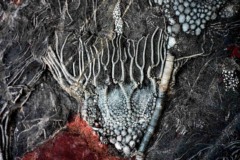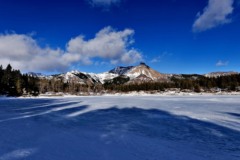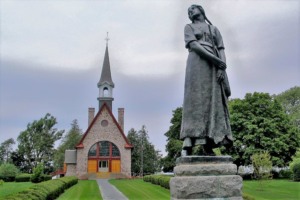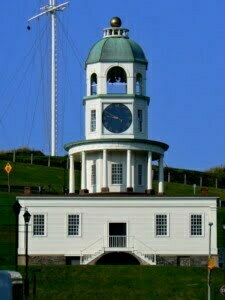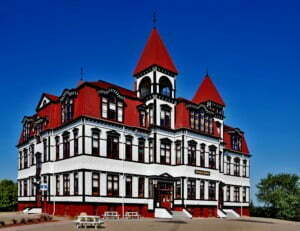Tatshenshini Alsek Provincial Park is also known as Tatshenshini-Alsek. It is a provincial park in the Canadian province of British Columbia that is 9,580 km2 (3,700 sq mi) in size. Conservation groups in Canada and the US worked hard to stop mining exploration and development in the area and protect it, so it was set up in 1993. Because the park has a lot of different plants and animals and a long history of nature.
Tatshenshini Alsek Park
The park is in the far northwest corner of British Columbia, close to the border with the U.S. state of Alaska and the Canadian territory of Yukon. The park is in British Columbia, west of the Haines Highway. It is between Kluane National Park and Reserve in the Yukon and Glacier Bay and Wrangell–St. Elias National Parks and Preserves in Alaska. It is part of the Kluane-Wrangell-St. Elias-Glacier Bay-Tatshenshini-Alsek park system and was named a UNESCO World Heritage Site in 1994.
Tatshenshini Alsek Provincial Park History
Over the years, many native peoples, like the Tlingit and Southern Tutchone, lived in this area. They built fishing villages along the rivers. Along the park’s eastern edge is an old trade route that the Chilkat, a Tlingit people, used to trade with the Tutchone. In the middle of the 19th century, a severe flood happened when a natural dam on the Alsek River suddenly broke.
The dam was made when a glacier moved across the entire Alsek River channel. The blocked river created a large lake upstream of the dam. At Dry Bay, a village of Tutchone people was swept away by a wall of water that was 7 meters (23 feet) high and 15 meters (49 feet) wide. All of the people who lived there died. Tatshenshini Alsek was one of the last places to be mapped and explored in British Columbia.
In the 1960s, geologists looked for minerals for the first time in the area. Around Windy Craggy Mountain, in the middle of the Tatshenshini region, there were a lot of copper deposits found. Two companies started rafting the Tatshenshini, also known as “the Tat,” and Alsek rivers for the first time in the mid-1970s. Around the middle of the 1980s, there was a plan to turn Windy Craggy Peak into a big open-pit mine.
Tatshenshini International was founded in 1991. It is a network of the top 50 environmental groups in North America. After that, there was a very active campaign in Canada and the United States, especially in the U.S. Congress and, later, in the White House, when then-Vice President Al Gore was asked to help. In the end, BC Premier Mike Harcourt responded by having the Commission on Resources and the Environment (CORE) look into the problems with Tatshenshini-Alsek.
In June 1993, the BC government, led by Premier Harcourt, decided to make Tatshenshini-Alsek a Class A park to protect it. A settlement of $103.8 million was given to the people who owned the Windy-Craggy mineral claims.
This finished protecting the world’s largest international park complex, which included the national parks next to it. The International Union for the Conservation of Nature (IUCN) suggested that the area be protected by making it a UNESCO World Heritage Site. It’s also because of its beautiful glaciers and ice fields and the fact that it is an important place for grizzly bears to live.
In 1999, a group of sheep hunters found artifacts and the remains of a young male at the base of a glacier in the park. The young man was named Kwaday Dan Ts’nchi, which means “Long Ago Man Found.” It turned out that the well-preserved frozen body was between 300 and 550 years old. Representatives of the Champagne and Aishihik First Nations were asked what to call the young man who was found on their historic land.
Also, they agreed to let scientists and DNA experts test the bodies. Researchers asked for volunteers to see if they could find people with the same genes as the “iceman.” About 241 people from the Champagne and Aishihik First Nations and related groups in the Yukon, British Columbia, and Alaska agreed to be tested.
In the Champagne and Aishihik First Nations, 17 living relatives were found to have the same mitochondrial DNA in the direct female line. This included two sisters. Fifteen of these 17 people say they are part of the Wolf clan, which suggests that the young man was also part of this clan. In the matrilineal system, a child is considered to be born into the clan of his or her mother, and the line of descent is traced through the mother.
Tatshenshini-Alsek Wildlife
The Alsek and Tatshenshini rivers flow through the park in U-shaped valleys made by glaciers. Through these valleys in the coastal mountains, the cool, moist air from the ocean can get into the cold interior. Because the environment changes quickly from the ocean to the interior, floods, landslides, and avalanches happen often, the geology is different, and the elevation changes a lot, the habitats are very different.
There are a lot of grizzly bears in Tatshenshini-Alsek Park. A green area that goes through a barrier of mountains and ice connects grizzly bear populations on the coast and in the interior and makes a great home for them. The glacier bear only lives in the park in Canada. This extremely rare blue-gray color phase of the black bear is only found in the park and just across the border in the United States.
Tatshenshini-Alsek Park is home to Dall’s sheep, mountain goats, Kenai moose, grey wolves, bald and golden eagles, peregrine and gyr falcons, trumpeter swans, and Dall’s sheep. Along the coast, you can see both sea lions and humpback whales.
There are the Alsek Ranges, and Mount Fairweather, which is 4,671 meters (15,325 feet) high, is the highest point in the province. The Tatshenshini-Alsek area is in a place where there are a lot of earthquakes. Slippage along the Fairweather and Hubbard/Border Faults to the west and the Denali Fault to the north cause regular earthquakes.




